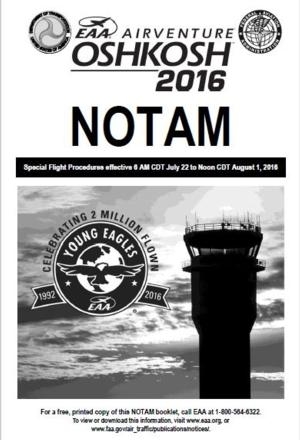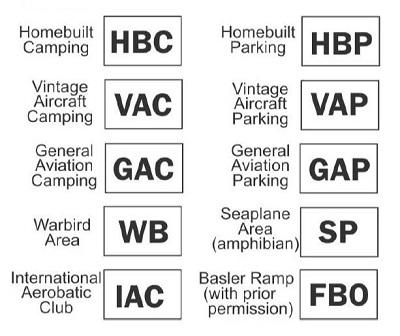Practicing Your Pilot Skills Prior To Arrival Relieves The Tension, Adds To The Fun, And Increases Safety
This is the fifth of a 6-part series by Earl Downs that we hope will help pilots who have never flown into EAA AirVenture Oshkosh and landed at Wittman Regional Airport. The concluding part of our “how to” series will be published next Friday, July 1.

For a recreational flyer, flying into Wittman Regional Airport during EAA AirVenture is part of the adventure. You’ll probably hear some wild stories about the arrival and departure procedures, but if you are prepared it’s a lot of fun. This time we’re going to talk about sharpening your pilot skills in making a go-around, and we’ll also touch on ground procedures after landing.
The Safety Speech
The practice maneuvers I’ll be discussing are normal and safe, but don’t practice any flight maneuver you are not comfortable with without the help of an experienced safety pilot or flight instructor. Keep in mind that any training you receive from a CFI in preparation for Oshkosh could be counted towards a flight review.
The Go-Around (rejected landing)
When flying into Oshkosh during AirVenture, it’s easy to take a mindset that a go around is not something you want to do. No doubt, a go-around will involve a little hassle to get back into the pattern, but you must absolutely be prepared to do it.
It’s unfortunately true that go-around accidents are all too common in general aviation, and it has happened at AirVenture. However, with a little practice, a go-around is nothing more than a normal procedure.
In a previous segment of this series we discussed the importance of establishing a point where you must be in a stabilized approach. If that point is reached and your approach is not stabilized, a properly executed go-around could prevent an accident. There is also always a possibility that the tower could request that you go around even if you don’t see the reason for it.
Go-Around Practice
The practicing I’ll be discussing is general in nature. Always use procedures that are spelled out in the Pilots Operating Handbook (POH). If you are flying a home-built experimental airplane, these procedures should have been developed in your phase-1 flight test program and included in the POH you created, or at least placed on a checklist.
Choose a suitable practice area and establish a make-believe runway altitude (the hard floor) no less than 1500 feet above the terrain. Use a road or section line as an imaginary runway. Establish a normal traffic pattern to your, “runway in the sky.” Just execute a normal final approach in landing configuration and, at about 200 feet above the hard floor, execute a go-around using procedures that should go something like this:
- Apply full power. Be ready for torque and P-factor to cause yawing of the aircraft; counter it with rudder (center the ball).
- Establish a pitch attitude that results in an indicated air speed that is no less than the best angle of climb speed (Vx) and no greater than best rate of climb speed (Vy). Make preliminary pitch-trim changes if needed, but don’t spend a lot of time with the trim.
- Retract flaps (if applicable) to the recommended go-around setting, or to what you established in phase 1 flight testing. Adjust pitch to maintain an indicated airspeed of no less than Vx or more than Vy. Trim as required.
- When a positive rate of climb is indicated either by instrumentation or visual reference to the ground, retract the landing gear (if applicable).
- Maintain the appropriate climb airspeed until any obstructions are cleared or upon reaching pattern altitude.
On the first practice run, take your time and make note of pitch attitudes and the amount of trim change required to hold the proper airspeed during the configuration changes of the go-around. After about 30 minutes of practice you should start to feel confident in your ability to successfully reject the landing. Of course, at EAA AirVenture, you need to immediately let the tower know what is going on, but always fly the airplane first. Let the control tower worry about how to work you back into the traffic pattern.

After Landing
The AirVenture NOTAM gives explicit instructions about exiting the runway and having appropriate signs available to show ground flag persons your parking preference. On some runways, flag persons will be indicating to exit the runway onto the sod. It’s important to respond as quickly as possible, but not until the aircraft has slowed sufficiently for the turnoff to be safe. Both taildraggers and tricycle gear airplanes have incurred damage at AirVenture because the pilots rushed to get off the runway.
Aircraft that weigh less than 6250 pounds are required to follow signals to clear the runway onto the sod. If your aircraft is, for some reason, not capable or unsafe to be operated on the sod, tell the control tower prior to landing that you need a paved taxiway.
The flag persons are well-trained EAA volunteers that have been given clear guidance regarding the directing of aircraft off the runway. But remember, the pilot-in-command always has the last say when it comes to safety.
Airplanes landing on runways 18L or 36R (the converted taxiway) must not cross the adjacent parallel runway unless a clearance has been received from the control tower or a ground flag person wearing a “pink shirt.” Pink shirted flag persons are not EAA volunteers, they are FAA air traffic controllers. When you get a clearance to cross another runway, be prompt but safe.
Remember, the ground flag persons are EAA member volunteers (except the “pink shirts”) who are trying their best to efficiently get you where you want to go. Sometimes things may not go as you plan, but you need to do the best you can to follow the directions you are given and sort out any corrections after you have parked.
Also, so much is going on around you while you’re taxing to the parking area, you need to be aware of anything that could require an immediate need to stop your engine. Speaking for myself, I always have a hand near the magneto switch, just in case.
(Images from AirVenture NOTAM)
 Airbus Racer Helicopter Demonstrator First Flight Part of Clean Sky 2 Initiative
Airbus Racer Helicopter Demonstrator First Flight Part of Clean Sky 2 Initiative Diamond's Electric DA40 Finds Fans at Dübendorf
Diamond's Electric DA40 Finds Fans at Dübendorf ANN's Daily Aero-Term (04.23.24): Line Up And Wait (LUAW)
ANN's Daily Aero-Term (04.23.24): Line Up And Wait (LUAW) NTSB Final Report: Extra Flugzeugbau GMBH EA300/L
NTSB Final Report: Extra Flugzeugbau GMBH EA300/L Classic Aero-TV: 'Never Give Up' - Advice From Two of FedEx's Female Captains
Classic Aero-TV: 'Never Give Up' - Advice From Two of FedEx's Female Captains




